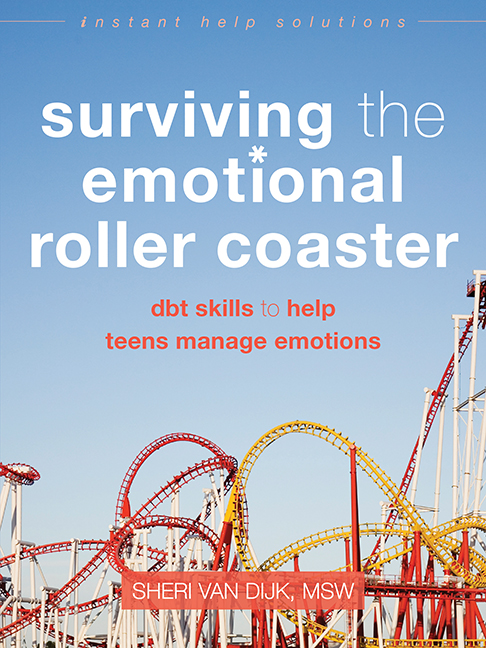By Sheri Van Dijk, MSW
Dialectical behavior therapy (DBT) is a treatment that was originally created by Marsha Linehan and her team to treat individuals with borderline personality disorder (BPD). Folks with BPD have what’s called pervasive emotion dysregulation—in other words, they struggle to identify what they’re feeling, don’t have the skills to effectively manage the emotions that arise, and end up turning to problem behaviors (such as suicide attempts, self-harming behaviors, or substance use), in an attempt to cope.
Over the years, however, we’ve been learning that DBT is helpful for disorders relating to emotion dysregulation in general (such as depression and bipolar disorder, anxiety disorders, eating disorders, and substance abuse) and the DBT skills also help us live healthier, more contented lives whether we have mental health problems or not.
So, what exactly is DBT?
DBT is a type of cognitive behavior therapy (CBT), which helps people see the connection between thoughts, emotions, and behaviors, and which is based on the idea that if we change a thought we can change the related emotions and behaviors; if we change a behavior, we can change our thoughts and emotions, and so on. The skills we teach people in DBT, however, don’t only focus on change, but on first accepting themselves as they are. Of course, change strategies also come into play, but when we try to help someone change too quickly, this often feels invalidating, so the emphasis in DBT is on accepting our client as she is and then helping her find more effective ways of doing things.
When people ask me what the difference is between DBT and CBT, my first response is that DBT is “CBT on steroids.” DBT is focused on teaching people new skills just as CBT is, but it’s the new, improved CBT; and a big part of this improvement is the emphasis on mindfulness and acceptance techniques. Mindfulness (a practice that helps us to live our lives more in the present moment, and to be more accepting of what we find in the present) has been proven in hundreds of scientific studies to be effective in a variety of mental health problems, in part by reducing emotional pain and making the pain in our lives more tolerable.
DBT is about much more than the skills we teach our clients—it’s how we present those skills in a validating, accepting way.
DBT skills fall into four categories: the Core Mindfulness skills; Distress Tolerance skills, which help people survive crisis situations without making things worse for themselves by engaging in problematic behaviors such as suicide attempts, self-harming, substance abuse, and so on; Emotion Regulation skills, which help people become more effective at identifying and managing their emotions more effectively; and Interpersonal Effectiveness skills, which increase an individual’s ability to be effective in relationships and interpersonal interactions.
DBT is about much more than the skills we teach our clients—it’s how we present those skills in a validating, accepting way. It’s about making sense of our client’s behaviors and not pathologizing them even when those behaviors are problematic; it’s about developing a thorough understanding of our client and her patterns so we can figure out the best strategies to help her change; and it’s about recognizing that everything is learned—and can therefore be unlearned—so growth can take place.
 Sheri Van Dijk, MSW, is a mental health therapist and renowned dialectical behavior therapy (DBT) expert. She is author of seven books, including Surviving the Emotional Roller Coaster, Don’t Let Your Emotions Run Your Life for Teens, and Relationship Skills101 for Teens.
Sheri Van Dijk, MSW, is a mental health therapist and renowned dialectical behavior therapy (DBT) expert. She is author of seven books, including Surviving the Emotional Roller Coaster, Don’t Let Your Emotions Run Your Life for Teens, and Relationship Skills101 for Teens.


 2024 Peace Playbook: 3 Tactics to Avoid Clashes with Your Partner
2024 Peace Playbook: 3 Tactics to Avoid Clashes with Your Partner